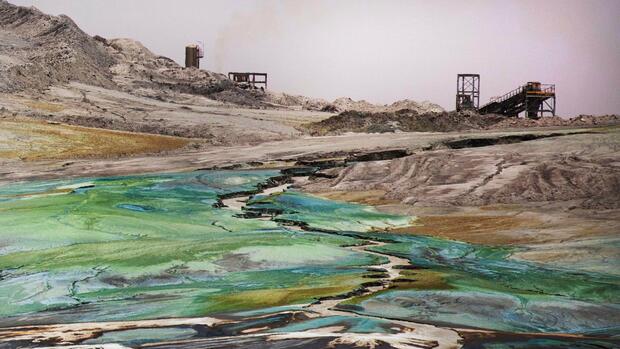Geopolitical risks are putting a strain on the supply of the energy raw material.
(Photo: Reuters)
Zurich The price of uranium has reached its highest level in twelve years: the raw material required for electricity production in nuclear power plants was trading at around $62 per pound on Friday, according to data from the financial service Bloomberg based on data provider UxC. This is the highest level in the time series going back to 2017 – and the highest price since the Fukushima reactor disaster in 2011, as the media report, citing further UxC data.
Since the beginning of August alone, uranium ore has become more expensive by ten percent, and over the past twelve months it has increased by more than 20 percent. Observers point to geopolitical uncertainties as a reason, which particularly endanger the supply of uranium in Europe. Analyst Richard Hatch from Berenberg writes in a recently published study: “Supply is tight and demand continues to rise.”
At the beginning of August, the military overthrew the democratic government in Niger, one of the world’s largest uranium producers and traditionally particularly important for French nuclear power plants. Just last week, the French uranium processor Orano stopped its production in Niger. According to data from the International Atomic Energy Agency (IAEA), the African country has over five percent of the world’s economically mineable uranium ore reserves.
Europe continues to rely on Russian uranium
The largest deposits are in Australia, Kazakhstan and Canada. Nevertheless, both Europe and the USA rely on uranium imports from Russia.
With eight percent of global reserves, Russia is also a powerful player in the uranium market. The West has so far left out the Russian state-owned company Rosatom in its sanctions packages in response to the Russian war of aggression in Ukraine.
According to the EU Commission, even after the start of the war, Europe sourced around 20 percent of its uranium from Russia and another 20 percent from Kazakhstan. According to Euratom, 18 nuclear power plants across Europe can, for technical reasons, operate exclusively with uranium from Russian production, for example in the Czech Republic and Hungary.
The US and Europe are trying to reduce dependence on Russia and are increasingly relying on Mexico, as Bloomberg recently reported. But at the same time, China is building nuclear power plants on a large scale.
China wants to bring 45 nuclear reactors online within the next 15 years. Russia is planning 25 reactors, India twelve. But the construction of new mines is not keeping pace with the mining. The shares of uranium producers have recently also benefited from this trend.
The shares of the US group Cameco rose by 38 percent in the past twelve months. The shares of the Canadian competitor Nextgen Energy climbed by 44 percent in the same period. And according to Berenberg experts, there is currently no end in sight to the uranium rally.
More: Investors can benefit from the rising price of uranium

